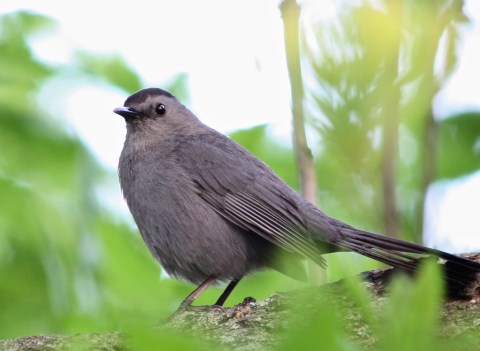Right on cue, the Orioles arrived to our garden this week. Each spring we are graced with a small flock, but not until the pear and crabapple trees come into flower. The Orioles have a sweetly distinct melodious call that draws you to them. When I looked out the back door, the brilliantly feathered friends were hanging every which way as they dangled from branches while drinking nectar from the pear blossoms, and they were also enjoying bowls of fresh orange juice.
Back in the day when there were many more orchards, and orchards trees planted in people’s gardens, New England would see many more Orioles. Perhaps with the growing local farm to table movement, the Oriole population will increase. Wouldn’t that be wonderful 🙂
The Orioles weren’t the only frugivores dining on the orange halves. We often leave berries out for our resident Catbird family, and they too were loving the juicy oranges.
Don’t you love this idea- Thanks to my friend Robin for posting on Facebook. It took all of two minutes to set up. Three bamboo stake and an elastic. The squirrels have been making a mess of the orange halves in bowls. They haven’t quite figured out how to abscond with the oranges in the bamboo stakes.
Frugivorous Bird Species
Frugivorous is pronounced similarly to “deliver us.”
Many birds such as Cedar Waxwings eat fruit. Other species such Orioles show a strong preference for fruit but also eat significant quantities of other foods.
Other birds that sample fruit consistently, even if they aren’t entirely frugivorous, include:
Chickadees, tits, and titmice
Grosbeaks and tanagers
Kingbirds and vireos
Thrushes, mockingbirds, and thrashers
Quail, grouse, and pheasants
Wild turkeys
Woodpeckers
Wrens
Plant flowering and fruiting trees, and they will come <3
Please Note – If you would like to follow or subscribe to my blog, click the Follow button in the lower right hand corner. Thank you so much if you do!
























